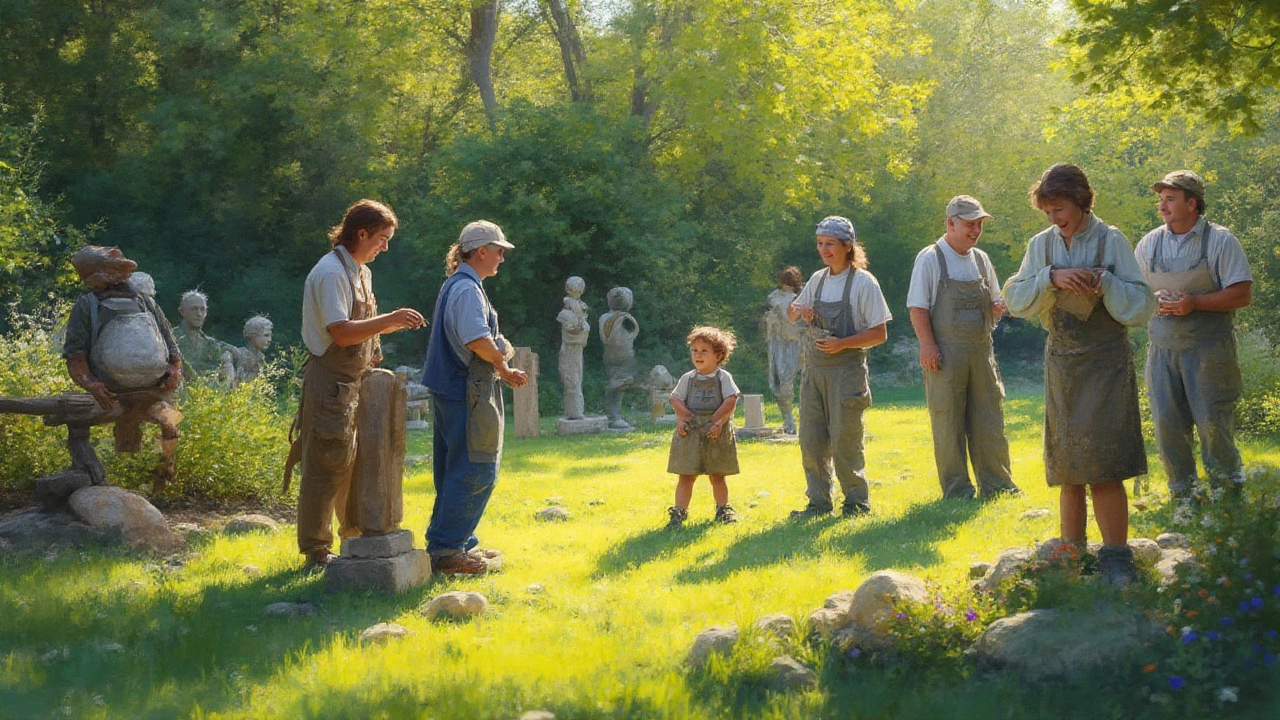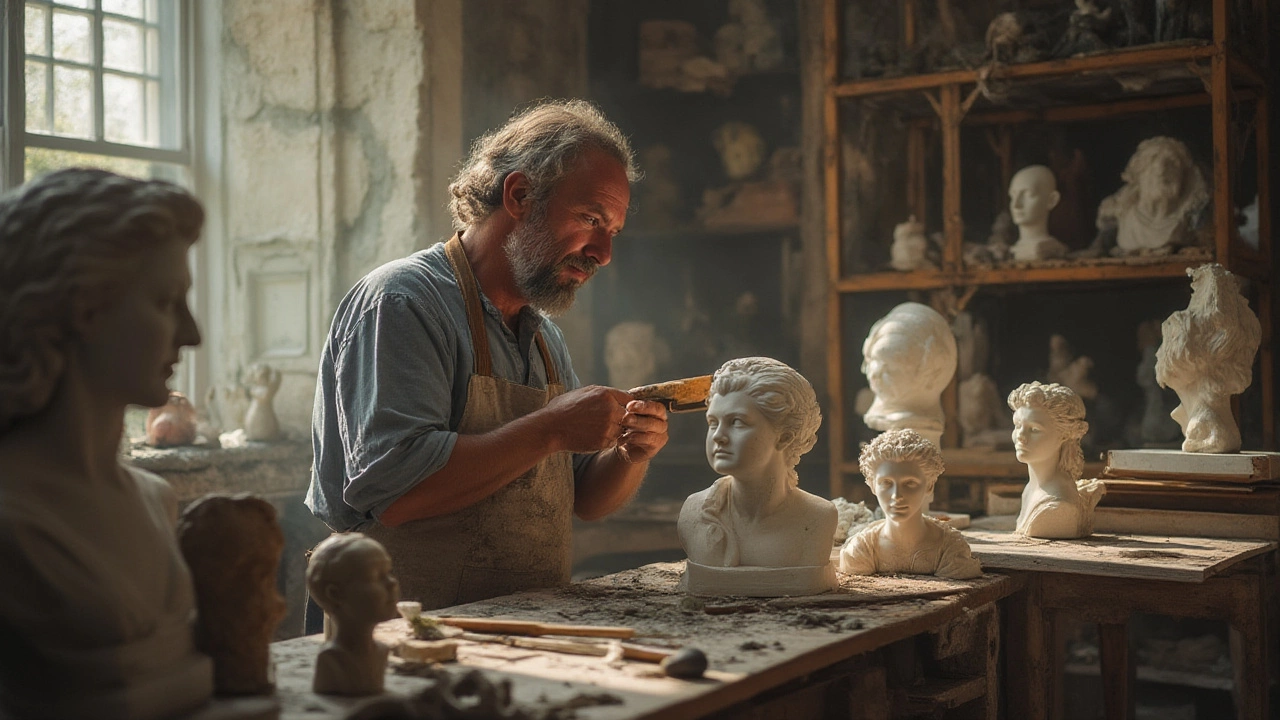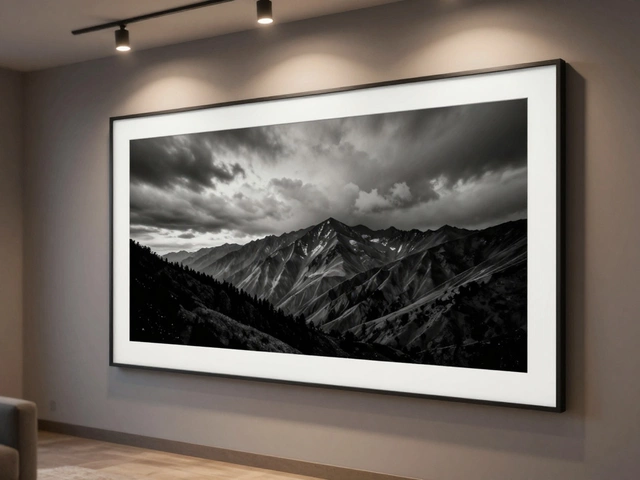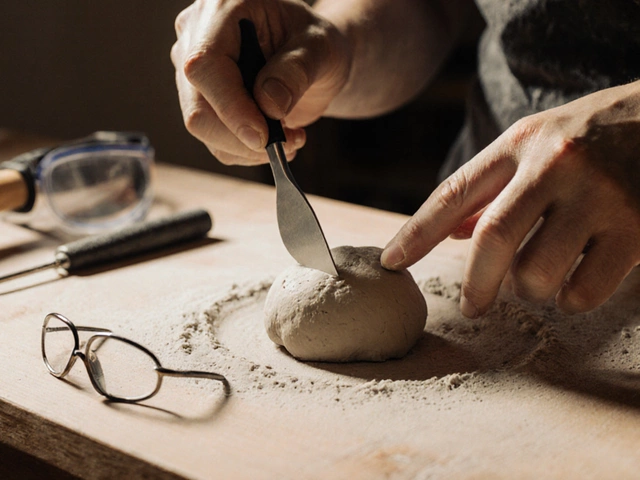Think about walking into a room and seeing a ten-foot-tall horse rearing up, or maybe stumbling into an ancient garden where marble gods seem ready to step off their pedestals. Now, picture the creative minds who shaped those masterpieces from blocks of stone, lumps of clay, or even pixels on a screen. Most people just call them "sculptors," but that one word barely covers the wild mix of talents, backgrounds, and techniques behind every great sculpture.
Who Are Sculpture Artists? Profiles, Inspirations, and Specialties
If you ask ten different people what kind of artist makes sculptures, you’ll get answers ranging from "brilliant loners with chisels" to "tech nerds with 3D printers." At the heart of it, though, a sculpture artist is anyone who brings solid form to their ideas—using just about any material you can imagine. Some artists call themselves sculptors, others say multi-media artists, installation artists, or even fabricators. It’s not about what’s on their business card but what comes out of their hands.
The classic sculptor—think Michelangelo or Auguste Rodin—usually worked with marble, bronze, or wood. These days, you’ll find sculptors who use found objects (old bikes, rusty chains), soft and squishy stuff like fabric, glass, and even moving water or sound. Some call it sculpture if it claims 3D space, and there's hot debate over whether digital and interactive pieces count, too. Ever seen a statue made of recycled plastic floating in a river for a climate protest? That’s sculpture—and so is a sleek 3D-printed figure you can buy from a gallery on Instagram.
Motivations for making sculpture are as different as the artists themselves. Some want to freeze a moment in time with lifelike forms. Others want to jolt you out of your comfort zone with things you can’t quite recognize. Then there are the ones who arrange light, wire, or shadow to stab at your imagination. For every sculptor selling to a museum, there’s another one secretly welding together surreal creatures in their garage. The field is full of outsiders, classically trained prodigies, autodidacts (self-taught), city kids, farm kids, dreamers, and practical problem-solvers.
The world’s most famous sculptors are a good mix. Michelangelo hammered away on marble in Renaissance Italy; Henry Moore gave us abstract forms inspired by bones and landscapes; Louise Bourgeois created disturbing and delicate spiders out of bronze and steel; Ai Weiwei makes huge installations out of porcelain, bicycles, or even life jackets pulled from refugee boats.
Here’s a fun fact to noodle on: According to stats from The Creative Independent’s 2023 study, only about 11% of working sculptors rely on art as their full-time income—most juggle teaching, commissions, or side gigs. On the flip side, public art budgets are up in many cities, which means more opportunities for bold and weird sculptures on sidewalks, parks, and plazas.
| Famous Sculptor | Country | Main Material | Signature Work |
|---|---|---|---|
| Michelangelo | Italy | Marble | David |
| Auguste Rodin | France | Bronze | The Thinker |
| Henry Moore | UK | Bronze | Reclining Figure |
| Louise Bourgeois | France/USA | Steel, Bronze | Maman (Spider) |
| Ai Weiwei | China | Mixed | Sunflower Seeds |
If you’re picturing sculpture as some snooty, gallery-only thing, you’re missing out. Community artists make pieces for neighborhood gardens, schools, and open-air shows. Star Wars fans carve movie props in their workshops. Street artists build pop-up sculptures from cardboard, zip-ties, or even supermarket carts. Anyone who builds up, carves away, or smashes materials into a new shape is staking their claim on the sculptor title.

What Does It Take to Become a Sculptor? Skills, Training, and Mindsets
If you think all sculptors are moody geniuses chiseling alone, you’d be surprised. Sure, some work solo—but plenty collaborate in teams, taking on giant public commissions or fancy installations for big events. To get started? There’s no one right path. Some begin at art school, others learn through apprenticeships, and more discover their passion in a high school ceramics class. Loads of sculptors skip school and learn by just trying things out, failing, and trying again.
Hands-on skills top the list—you gotta know the material. Marble carvers need patience for endless sanding and an eye for the “grain” in stone. Metal sculptors weld, solder, and sometimes get burned (literally) figuring out how to shape stubborn sheet metal. Working with wood? Precision, sharp tools, and respect for splinters are a must. If the artist uses clay, plastic, resin, papier-mâché, or glass, each material has its own rules and sweet spots. Get this wrong and the piece crumbles, shatters, or explodes. Some artists prefer casting, which lets them make copies or build from molds (kind of like making a really artistic Jell-O salad).
Modern technology has changed the game. 3D modeling, CNC routers, and even robotics mean sculptors don’t always have to touch everything by hand. But that brings new headaches: coding, machine maintenance, and learning software so that their vision doesn’t come out looking like a lumpy potato. Plus, digital sculptors work with pixels instead of clay, which means less mess (unless you count spilled coffee on the keyboard).
A sculptor’s brain is never off duty. They have to problem-solve non-stop. Want your piece to look like it floats in midair? Figure out balance, weight, gravity. If it’s going outside, sun, rain, vandals, and squirrels all want their say. Install a public piece, and you might wake up to find someone hanging a traffic cone on it by noon. Even with all this, most sculptors say accidents and mistakes often lead to the best work—happy surprises that textbooks never teach.
Getting noticed isn’t as easy as posting on social media and hoping for a million likes, either. Most sculptors hustle for years, show work in group exhibits, ask for grants, network at parties (awkward but crucial), and maybe take on jobs building theater sets or big props to pay the bills. Persistence matters way more than any diploma on the wall.
- Tips for aspiring sculptors:
- Start simple—a ball of clay, a pocketknife, leftover cardboard.
- Don’t sweat expensive materials. Creativity beats cost every time.
- Document your work—even a quick phone pic for later reference is better than nothing.
- Talk to other artists. They’ll have stories, tricks, and warnings that save you time.
- Share your art locally. School fairs, library displays, even your own front yard can be a gallery.
One wild fact: In 2024, the average large outdoor sculpture cost between $5,000 and $250,000 to produce, depending on size, materials, and whether lawyers had to get involved. Every piece is a gamble—will people love it, detest it, ignore it, or spray-paint something rude on it? That’s all part of a sculptor’s day-to-day adventure.

The Expanding World of Sculpture: Styles, Materials, and the Future
If you still think “sculpture” just means crusty statues in city parks, it’s time for a reality check. The world of sculpture is exploding with new approaches, materials, and attitudes that would have blown Michelangelo’s sandals straight off. These days, almost anything can be turned into sculpture—if the artist can imagine it and find a way to bring it to life.
Some sculptors stick to time-honored traditions: Marble busts, carved wood animals, hand-built clay figures. Others treat garbage dumps and recycling bins like art supply stores (think giant whale tails made of discarded plastic). Kinetic sculptors build pieces that spin or sway with the wind. Installation artists take over entire rooms, making you feel swallowed up by shiny metal tubes or miles of colored yarn. One memorable project in 2023 featured hundreds of boots dangling from trees in a Paris park to explore themes of migration and wandering.
Materials are evolving just as fast. Classic bronze and marble still shine, but now you’ll see sculptures in neon light, fiber optics, LEGO bricks, ice, foam, or even living plants. Some artists even use fire, water, or sound. Try watching glass sculptors as they shape molten blobs into delicate forms—it’s sweaty, tense, and more dangerous than people expect. Want to go high-tech? Digital sculptors use VR or 3D software to make wild, impossible stuff you can explore on a screen (or, sometimes, print into real-world objects).
And then there are collaborations: Artists join forces with scientists, architects, and even chefs. Jellyfish lookalike sculptures made from edible gelatin? It’s happened. Concrete busts filled with native wildflowers to attract pollinators? Those are popping up on European rooftops. Every decade, the definition of "sculpture" stretches wider and wider.
So, what’s next? Here’s what’s changing fast in sculpting right now:
- Upcycled art using trash and scrap metal, with some artists even running their own recycling programs.
- Sculptures that move: think wind-powered, solar-driven, or even interactive pieces that react when you get close.
- Digital and “phygital” sculptures—mixing physical materials with digital elements using sensors or apps.
- Community-focused work, often built with help from local volunteers at workshops and festivals.
- Temporary sculptures that only last a day or two—snow, sand, chalk, even elaborate cake or bread.
If you’re itching to get started and don’t know where to begin, think small: a piece of soap, a stick found in the park, wire hangers from your closet. The tools have never been more accessible (YouTube tutorials, free software, and friendly maker spaces in cities big and small). And there’s no right or wrong way—just the wild urge to create something that didn’t exist before.
Truth is, anyone can be a sculpture artist. Whether you’re shaping clay in your kitchen or masterminding a 200-foot public project, you’re part of a tradition that goes all the way back to people scratching shapes into cave walls. The one constant? Curiosity—the itch to make, shape, and share. So, the next time you pass a sculpture—old or new—wonder about the person who made it. Chances are, they’re not so different from you.







